Supertest: British Tier VI Cruiser Devonshire
7 min readHMS Devonshire, pennant number 39, was County-class heavy cruiser of the Royal Navy. More precisely, she was part of the London sub-class. The ship was launched in October 1927 and commissioned in March 1929.
The ship saw active service during World War II with the Home Fleet, supporting operations in Norway. During the Norwegian campaign, she evacuated King Haakon VII, Crown Prince Olav, and Norwegian government officials, including the Prime Minister, Johan Nygaardsvold. During this operation, she almost managed to run into the Scharnhorst and Gneisenau that were at this point busy sinking the Aircraft carrier HMS Glorious and as well as the Destroyers Acasta and Ardent. The Devonshire took part in Operation Menace in August 1940 which was a failed attempt to turn back Vichy French cruisers that were stationed at Dakar. She supported operations of the Free French forces in Africa in 1941 and was also part of the escort for the first convoy to the Soviet Union with Operation Dervish and supported the Allied Invasion of Madagascar in 1942.
She spent the rest of the war escorting convoys, aircraft carriers and, after Germany surrendered, 2 German cruisers. After 1947, the ship was converted into a training ship and was scrapped in 1954.
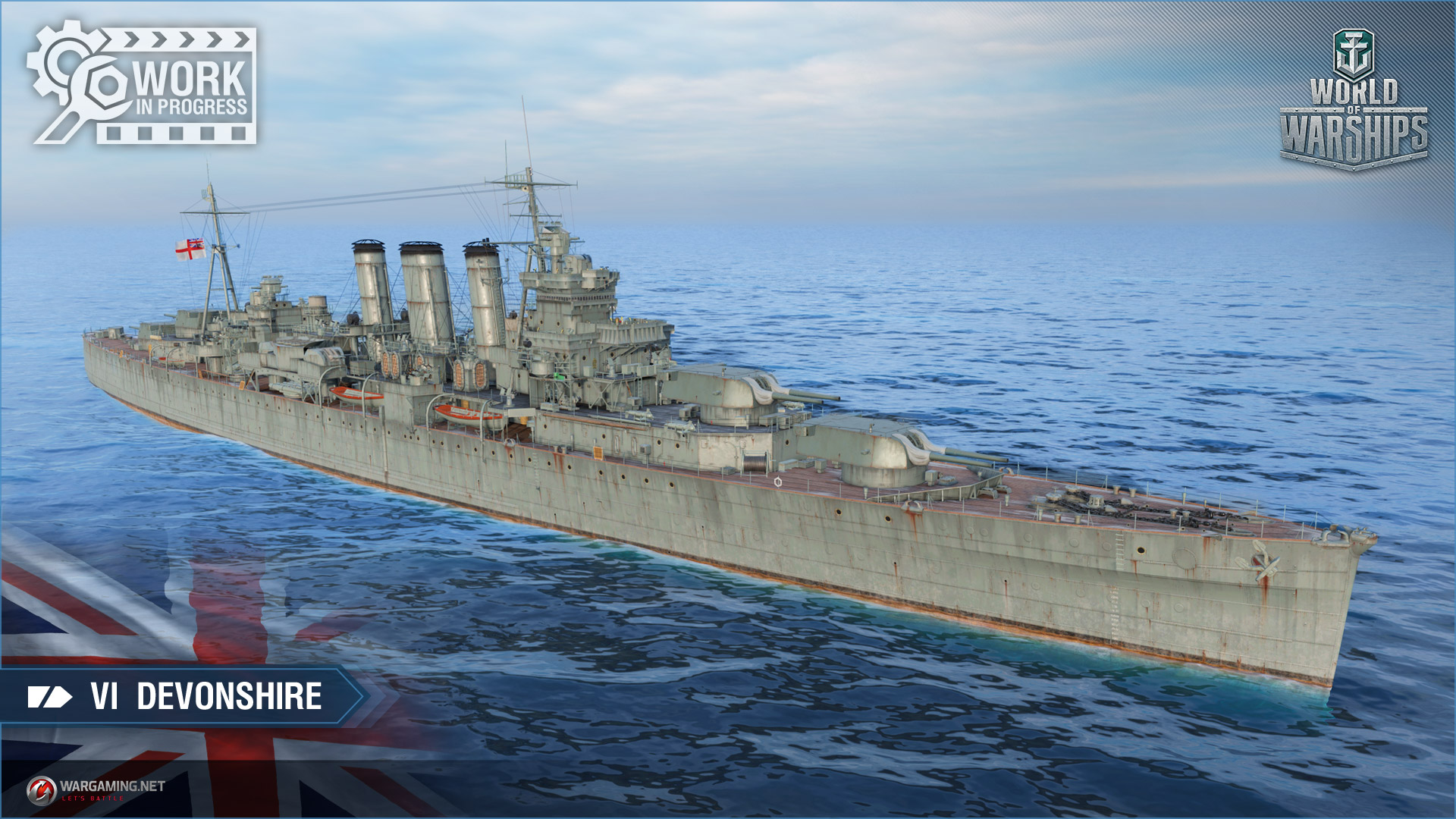
Hull | Engine | Gun Fire Control System | Main battery | Torpedoes |
Devonshire (A) |
Propulsion: 80 000 hp |
Mk VI mod. 1 |
203 mm/50 BL Mk VIII |
533 mm Mk IX |
Devonshire (B) |
Mk VI mod. 2 |
Stock ship
| Tier | VI |
| Health | 28 600 HP |
| Main Armament | |
| Maximum Firing Range | 12.730 km |
| 203 mm/50 BL Mk VIII | 4 x 2 203 mm |
| Secondary Armament | |
| Maximum Firing Range | 5.000 km |
| 102 mm/45 QF Mk XIX | 4 x 2 102 mm |
| Torpedo Armament | |
| Maximum Firing Range | 8.000 km |
| 533 mm QR Mk IV | 2 x 4 533 mm |
| Maximum speed | 31.3 kt |
| Turning Circle Radius | 710 m |
| Rudder Shift Time | 11.0 s |
| Surface Detectability | 11.52 km |
| Air Detectability | 6.6 km |
| Detectability After Firing Main Gus in Smoke | 6.41 km |
| 4 x 2 203 mm/50 BL Mk VIII | |
| Reloading Time | 12 s |
| 180 Degree Turn Time | 22.5 s |
| Optimal firing angles at the front | 34° |
| Optimal firing angles at the rear | 33° |
| Sigma | 2.00 sigma |
| Maximum Dispersion | 118 m |
| Shells | |
| Type of Projectile | HE – 203 mm HE 256 lb |
| Alpha Damage | 2 850 HP |
| Damage | 1 230 HP |
| Penetration capacity | 33 mm |
| Explosion size | 0.86 |
| Fire chance | 15 % |
| Projectile Speed | 814 m/s |
| Air Drag | 0.304 |
| Projectile Mass | 116.1 |
| Type of Projectile | AP – 203 mm AP 256 lb |
| Alpha Damage | 4 500 HP |
| Chance to Cause Fire | -0.5 % |
| Projectile Speed | 814 m/s |
| Air Drag | 0.304 |
| Projectile Mass | 116.1 |
| Projectile Krupp | 2 400 |
| Projectile Detonator | 0.033 s |
| Detonator threshold | 34 mm |
| 4 x 2 102 mm/45 QF Mk XIX | |
| Reloading Time | 3.0 s |
| Sigma | 1.00 sigma |
| Shells | |
| Type of Projectile | HE – 102 mm HE 35 lb |
| Alpha Damage | 1 500 HP |
| Damage | 310 HP |
| HE penetration | 16 mm |
| Explosion Size | 0.3 |
| Chance to Cause Fire | 6 % |
| Projectile Speed | 811 m/s |
| Air Drag | 0.33 |
| Projectile Mass | 15.88 |
| 2 x 4 533 mm QR Mk IV 533 mm Mk IX | |
| Reloading Time | 96 s |
| Maximum Distance | 8.0 km |
| Optimal firing angles at the front | 42° |
| Optimal firing angles at the rear | 30° |
| Damage | 15 433 |
| Speed | 61 kt |
| Surface Detectability | 1.3 km |
| 4 x 2 102 mm/45 QF Mk XIX | |
| Sector range | 0.1 km – 5.8 km |
| Hit chance | 90 % |
| Sector’s damage | 27 |
| Sector’s damage frequency | 0.29 s |
| Sector’s damage per second | 95 |
| Flak clouds number | 3 |
| Flak cloud damage | 1400 |
| 4 x 4 40 mm/39 QF Mk VII | |
| Sector range | 0.1 km – 2.5 km |
| Hit chance | 90 % |
| Sector’s damage | 29 |
| Sector’s damage frequency | 0.29 s |
| Sector’s damage per second | 102 |
| 12 x 1 20 mm Oerlikon Mk IV | |
| Sector range | 0.1 km – 2.0 km |
| Hit chance | 85 % |
| Sector’s damage | 29 |
| Sector’s damage frequency | 0.29 s |
| Sector’s damage per second | 102 |
Slot 1 | Slot 2 | Slot 3 |
Damage Control Party I Work time: 5 s Cooldown: 90 s | Repair Party I Number of charges: 2 Work time: 28 s Cooldown: 120 s HP regeneration speed: 0.5% HP/s | Hydroacoustic Search I Number of charges: 2 Work time: 180 s Cooldown: 180 s Torpedo detection range: 3.0 km Ship detection range: 3.0 km |
Damage Control Party II Work time: 5 s Cooldown: 60 s | Repair Party II Number of charges: 3 Work time: 28 s Cooldown: 80 s HP regeneration speed: 0.5% HP/s | Hydroacoustic Search II Number of charges: 3 Work time: 180 s Cooldown: 120 s Torpedo detection range: 3.0 km Ship detection range: 3.0 km |
Fully upgraded
| Tier | VI |
| Health | 34 400 HP |
| Main Armament | |
| Maximum Firing Range | 14.003 km |
| 203 mm/50 BL Mk VIII | 4 x 2 203 mm |
| Secondary Armament | |
| Maximum Firing Range | 5.000 km |
| 102 mm/45 QF Mk XIX | 4 x 2 102 mm |
| Torpedo Armament | |
| Maximum Firing Range | 8.000 km |
| 533 mm QR Mk IV | 2 x 4 533 mm |
| Maximum speed | 31.3 kt |
| Turning Circle Radius | 710 m |
| Rudder Shift Time | 7.8 s |
| Surface Detectability | 11.52 km |
| Air Detectability | 6.6 km |
| Detectability After Firing Main Gus in Smoke | 6.41 km |
| 4 x 2 203 mm/50 BL Mk VIII | |
| Reloading Time | 12 s |
| 180 Degree Turn Time | 22.5 s |
| Optimal firing angles at the front | 34° |
| Optimal firing angles at the rear | 33° |
| Sigma | 2.00 sigma |
| Maximum Dispersion | 118 m |
| Shells | |
| Type of Projectile | HE – 203 mm HE 256 lb |
| Alpha Damage | 2 850 HP |
| Damage | 1 230 HP |
| Penetration capacity | 33 mm |
| Explosion size | 0.86 |
| Fire chance | 15 % |
| Projectile Speed | 814 m/s |
| Air Drag | 0.304 |
| Projectile Mass | 116.1 |
| Type of Projectile | AP – 203 mm AP 256 lb |
| Alpha Damage | 4 500 HP |
| Chance to Cause Fire | -0.5 % |
| Projectile Speed | 814 m/s |
| Air Drag | 0.304 |
| Projectile Mass | 116.1 |
| Projectile Krupp | 2 400 |
| Projectile Detonator | 0.033 s |
| Detonator threshold | 34 mm |
| 4 x 2 102 mm/45 QF Mk XIX | |
| Reloading Time | 3.0 s |
| Sigma | 1.00 sigma |
| Shells | |
| Type of Projectile | HE – 102 mm HE 35 lb |
| Alpha Damage | 1 500 HP |
| Damage | 310 HP |
| HE penetration | 16 mm |
| Explosion Size | 0.3 |
| Chance to Cause Fire | 6 % |
| Projectile Speed | 811 m/s |
| Air Drag | 0.33 |
| Projectile Mass | 15.88 |
| 2 x 4 533 mm QR Mk IV 533 mm Mk IX | |
| Reloading Time | 96 s |
| Maximum Distance | 8.0 km |
| Optimal firing angles at the front | 42° |
| Optimal firing angles at the rear | 30° |
| Damage | 15 433 |
| Speed | 61 kt |
| Surface Detectability | 1.3 km |
| 4 x 2 102 mm/45 QF Mk XIX | |
| Sector range | 0.1 km – 5.8 km |
| Hit chance | 90 % |
| Sector’s damage | 27 |
| Sector’s damage frequency | 0.29 s |
| Sector’s damage per second | 95 |
| Flak clouds number | 3 |
| Flak cloud damage | 1400 |
| 4 x 8 40 mm Vickers 2-pdr. Mk VIII | |
| Sector range | 0.1 km – 2.5 km |
| Hit chance | 90 % |
| Sector’s damage | 43 |
| Sector’s damage frequency | 0.29 s |
| Sector’s damage per second | 151 |
| 10 x 2 20 mm Oerlikon Mk V 2 x 1 20 mm Oerlikon Mk IV | |
| Sector range | 0.1 km – 2.0 km |
| Hit chance | 85 % |
| Sector’s damage | 45 |
| Sector’s damage frequency | 0.29 s |
| Sector’s damage per second | 158 |
Slot 1 | Slot 2 | Slot 3 |
Damage Control Party I Work time: 5 s Cooldown: 90 s | Repair Party I Number of charges: 2 Work time: 28 s Cooldown: 120 s HP regeneration speed: 0.5% HP/s | Hydroacoustic Search I Number of charges: 2 Work time: 180 s Cooldown: 180 s Torpedo detection range: 3.0 km Ship detection range: 3.0 km |
Damage Control Party II Work time: 5 s Cooldown: 60 s | Repair Party II Number of charges: 3 Work time: 28 s Cooldown: 80 s HP regeneration speed: 0.5% HP/s | Hydroacoustic Search II Number of charges: 3 Work time: 180 s Cooldown: 120 s Torpedo detection range: 3.0 km Ship detection range: 3.0 km |
The armor

The Devonshire presents slightly tougher armor protection than the London, most likely due to the fact that she doesn’t have a smokescreen. However, the protection of the vital parts of the ship remains fairly thin so battleships can punish the ship really hard.
The bow section
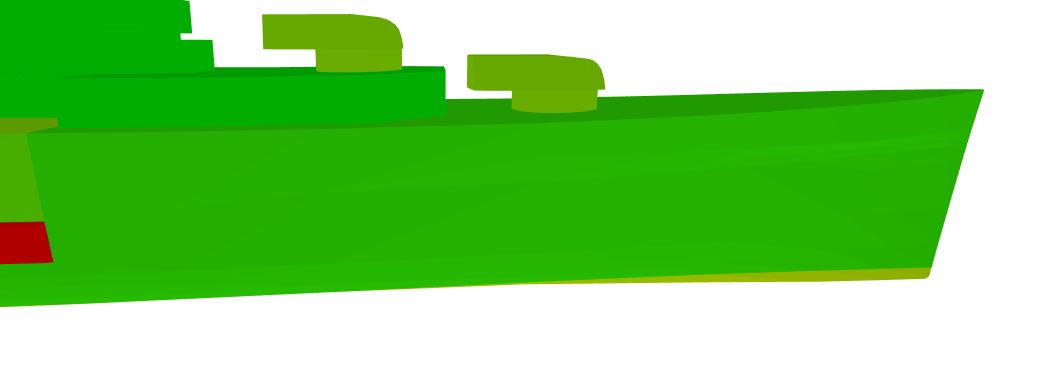
The bow of the Devonshire is 16 mm thick. Nothing special, this is just the classic bow plating that you can find on tier VI cruiser.
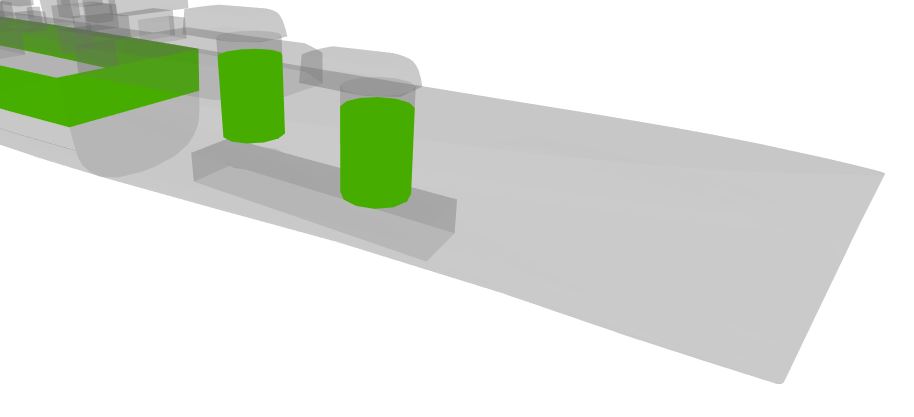
The casemate that protects the upper part of the middle section is 19 mm thick.
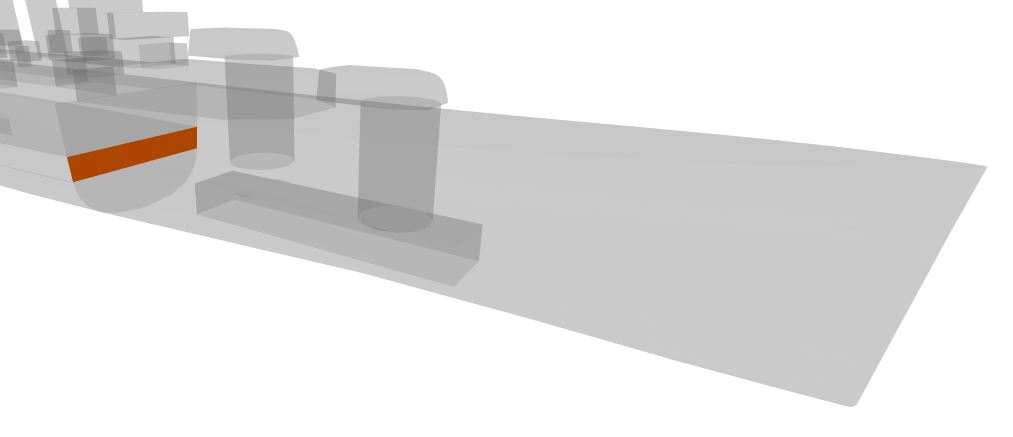
For the citadel’s athwartship, the upper part is 89 mm thick so, when it comes to shells from battleships, it will help very little but if cruisers are able to somehow penetrate the bow, this plate should be enough to protect the citadel. For the lower part of the citadel athwartship, it is 16 mm but since it’s deep underwater, let’s not bother with it.
The middle section
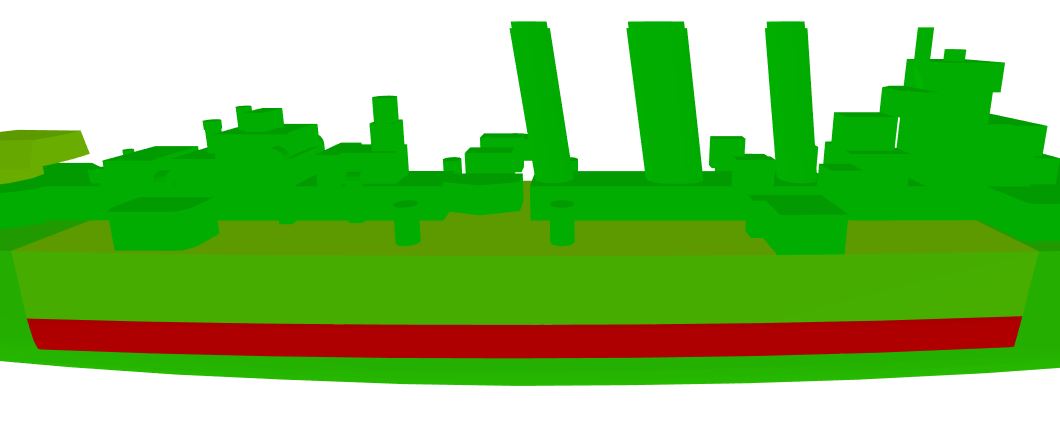
The deck of the Devonshire is 25 mm thick. This is actually very good because 356 mm will bounce on it if they don’t hit the deck with the right angle. The side armor is only 19 mm so while it will protect against cruisers’ AP shells, battleships will have no issue to go through it.
The main belt is 114 mm thick which is pretty good for this tier. It is also for the most part underwater so scoring a hit will not be that easy.
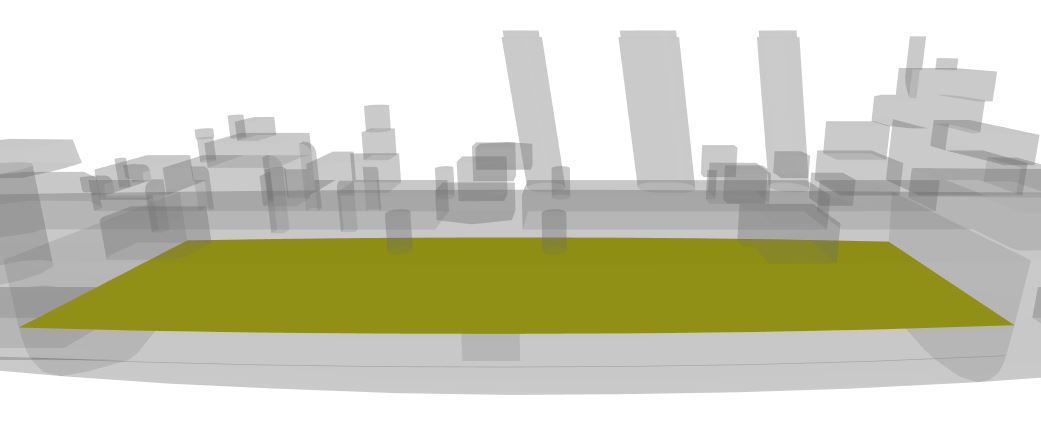
The horizontal protection is quite poor with the citadel deck only being 35 mm thick. AP bombs will have no issue going through it and the same goes for battleships shells with a correct angle of impact.
The stern section
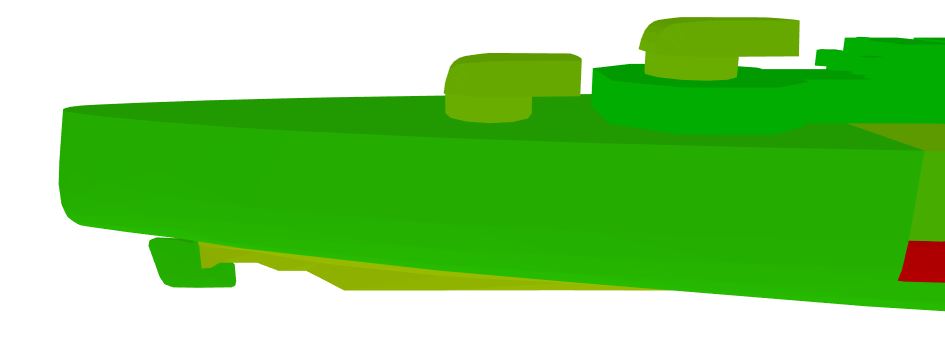
Just like for the bow, the stern is covered by 16 mm of armor. Once again, classic at tier VI.
For the upper casemate protecting the middle section, it’s 19 mm thick. The upper part of the citadel’s athwartship is 89 mm thick and for the lower part, it’s 16 mm thick.
The superstructure
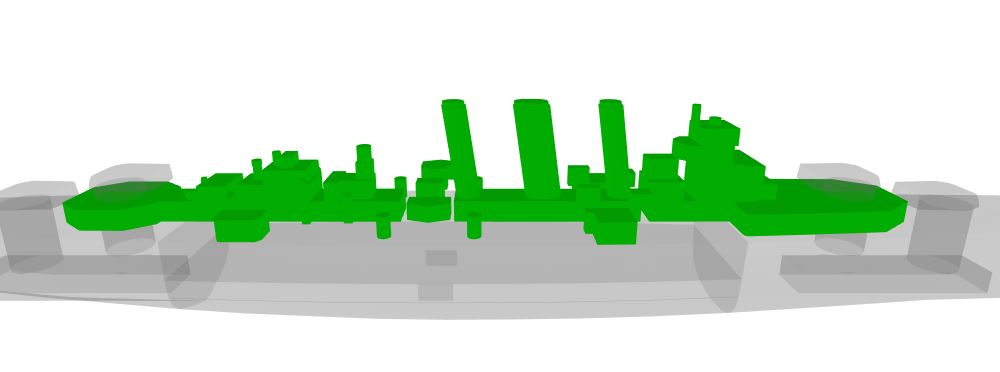
The superstructure is 13 mm thick and is, as you can see, very big. It is spreading all across the middle section, the bow and the stern.
The turrets
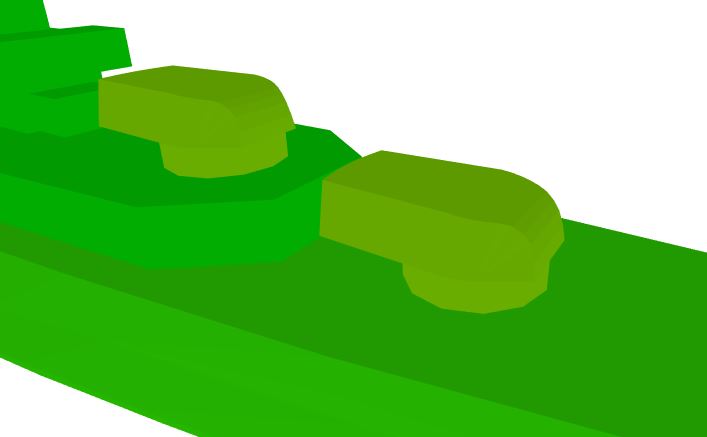
For the turrets, these are the same as on the London so they have very little protection with 25 mm of armor. The lower part of the barbette that is inside the ship is 19 mm.
Basically, get ready when these ships will arrive to have your turrets knocked down because a fly landed on them.
Personal opinion
For a tier VI ship, that one looks promising. The guns don’t have as much range issue as on the London and the armor is also stronger. Considering the fact that on top of that, the ship can have up to 4 Repair Parties, it will definitely be able to fight efficiently even in tier VIII (Hipper get ready).












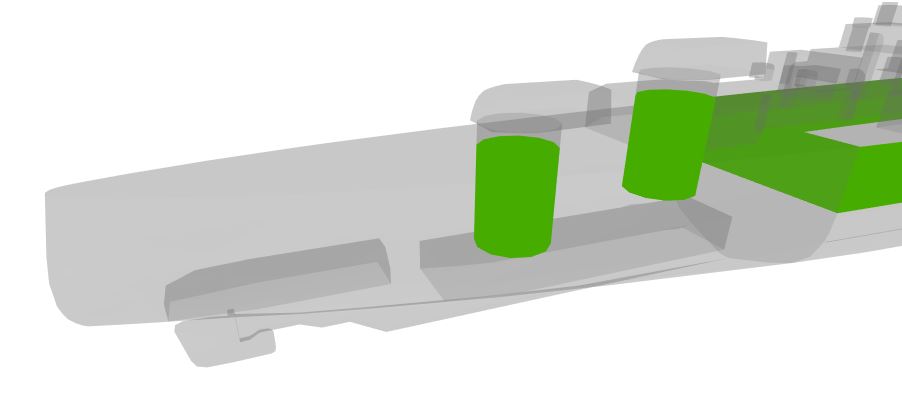
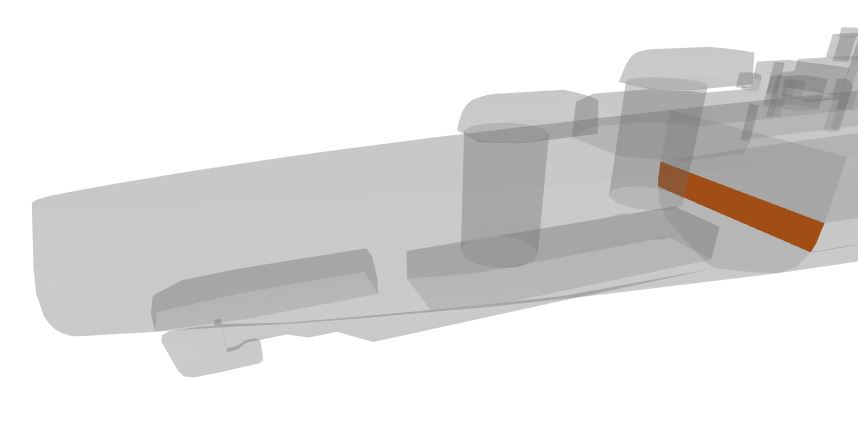


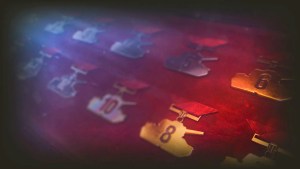

“During this operation, she almost managed to run into the Scharnhorst and Gneisenau that were at this point busy sinking the Aircraft carrier HMS Glorious and as well as the Destroyers Acasta and Ardent”. Man, what a battle!